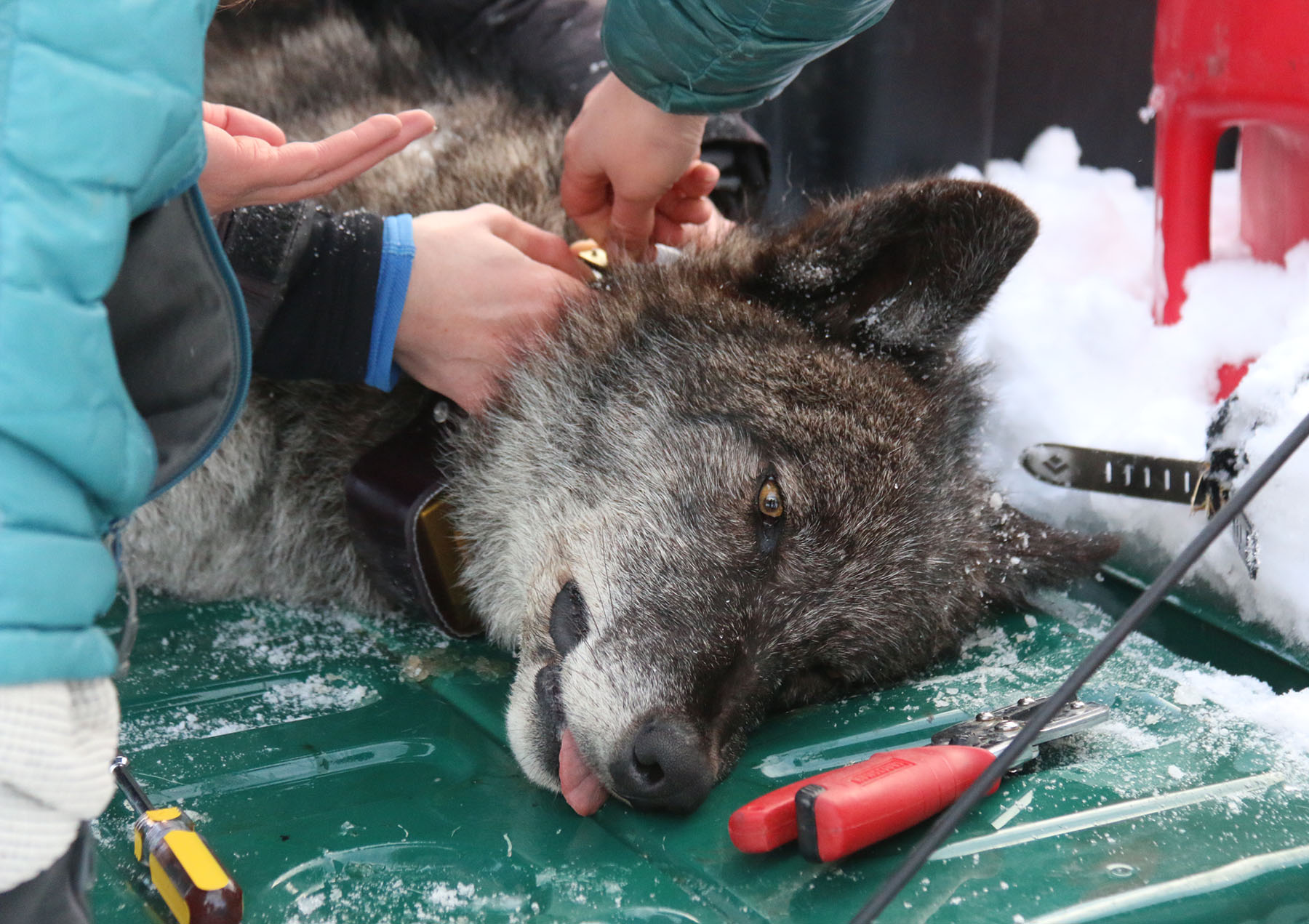Wolves Collared for Continued Monitoring
Mark Gocke, Public Information Specialist, 307-249-5811
March 26, 2021

Jackson - The Wyoming Game and Fish Department is continuing its wolf monitoring effort this winter with the capture and collaring of several animals across their range in northwest Wyoming. The Game and Fish Department is responsible for management of the state's wolf population outside Yellowstone National Park and the Wind River Indian Reservation.
Wyoming Game and Fish Wolf Biologist Ken Mills inspects a sedated young adult female wolf from the Pacific Creek Pack near near Moran, WY. The animal was captured in the Spread Creek drainage, which is an unusual location for them as they are typically north of Togwotee Pass.
So far this winter, approximately 43 new collars have been deployed, bringing the total number of marked animals to over 75 within the state's trophy game management area. Managers like to have at least 1-2 collared animals in each pack to monitor the changing distribution and derive an accurate count for the population. The Department has also been deploying additional GPS collars to assist in cooperative research projects with UC Berkeley, the National Elk Refuge, and Grand Teton National Park. Regular aerial surveys are flown to keep tabs on the collared animals and their associated packs.
Game and Fish Wolf Biologist Ken Mills reads the scale as a young adult female from the Horsetail Creek pack is weighed at a handling station near Kelly Warm Springs recently. The animal's GPS collar had failed and was being replaced.
Most of the captures are handled in the field away from people by a contracted professional wildlife capture crew. The crew will typically net-gun the animals, collect blood and other biological samples, fit it with a GPS collar or traditional VHF radio collar and release it on-site. The battery life will allow the GPS collar to record the animals' travels in detail for approximately 2-3 years; traditional radio collars last 7 years. In addition, the Department’s Large Carnivore biologists also venture into the field to follow-up on reported sightings, which helps gain accurate counts of wolves, as well as assist with the aerial captures each year.
Game and Fish Wolf Biologist Ken Mills collects a blood sample from a young adult female wolf from the Pacific Creek pack as wolf researcher Kristen Barker looks on. After biological samples are collected and the animal is fitted with a GPS collar, it is flown back to the area where captured and released.
To learn more about wolves in Wyoming visit the Game and Fish website or click this link: https://wgfd.wyo.gov/Wildlife-in-Wyoming/Large-Carnivore/Wolves-in-Wyoming.
- WGFD -
Legal Disclaimer:
EIN Presswire provides this news content "as is" without warranty of any kind. We do not accept any responsibility or liability for the accuracy, content, images, videos, licenses, completeness, legality, or reliability of the information contained in this article. If you have any complaints or copyright issues related to this article, kindly contact the author above.
